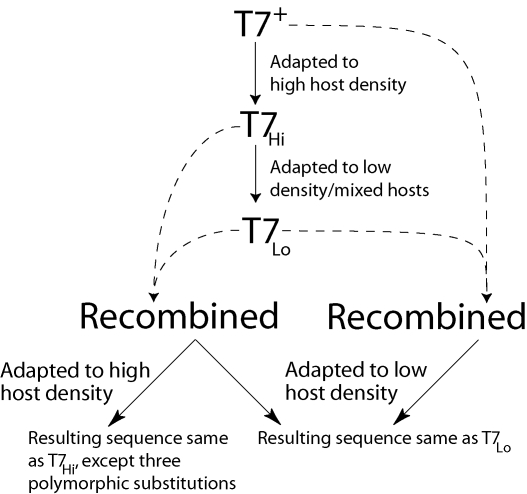Figure 3.
Summary of T7 adaptation and recombination. Wild-type T7 (T7+) was adapted to high host density to yield T7Hi. T7Hi was adapted to mixed permissive and nonpermissive cells, expected to select for slower lysis (yielding T7Lo, which was sequenced). A recombination assay was done between T7Hi and T7Lo. The recombinant population should contain many combinations of substitutions from each genome. The recombined pool adapted to high cell density was similar to T7Hi in both sequence and lysis time, indicating that the substitutions that occurred during T7Lo adaptation were only greatly advantageous under selection for slow lysis (four mutations were lost, three remained polymorphic but did not ascend to high levels). The recombinant line adapted to low cell density was indistinguishable from T7Lo in sequence and phenotype, suggesting that all of the mutations were highly advantageous at low host density. A recombination between T7Lo and T7+ adapted at low density also arrived at a sequence identical to T7Lo.

